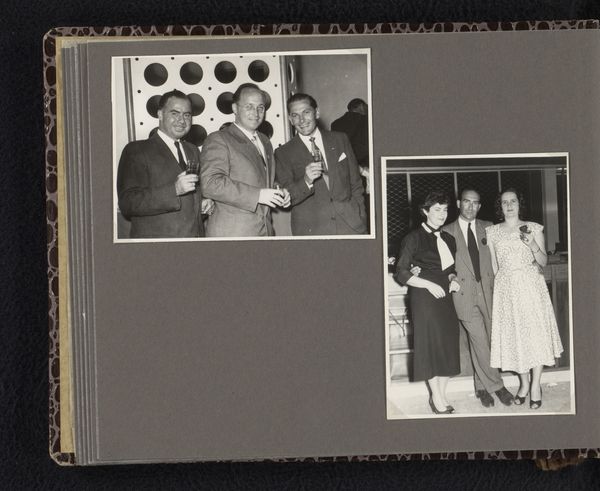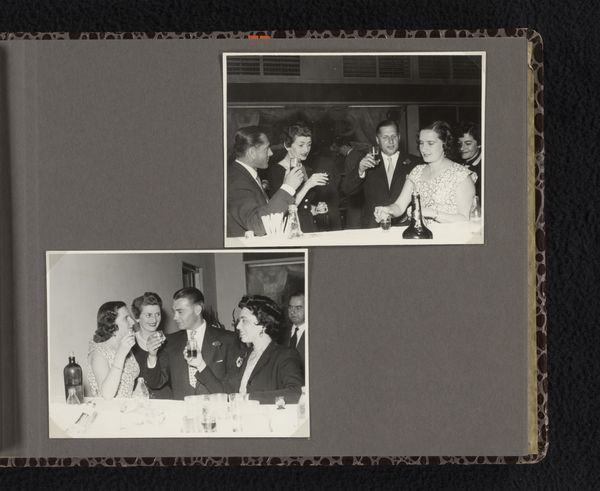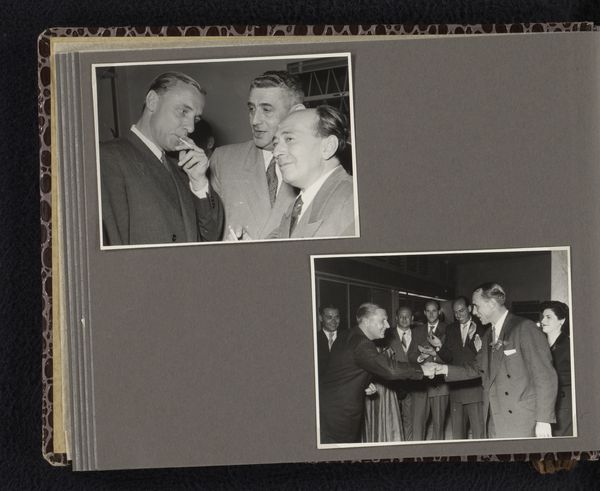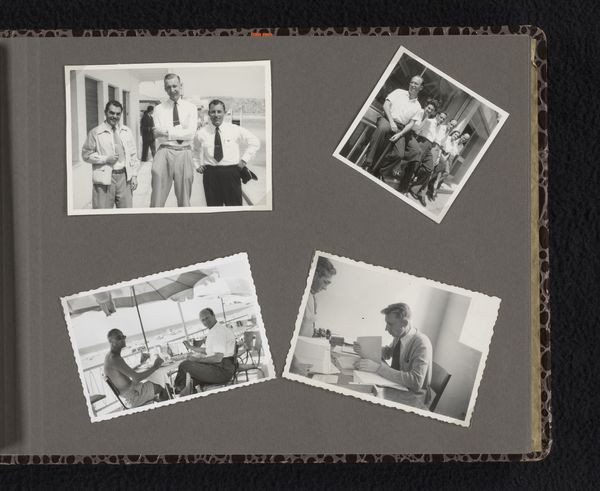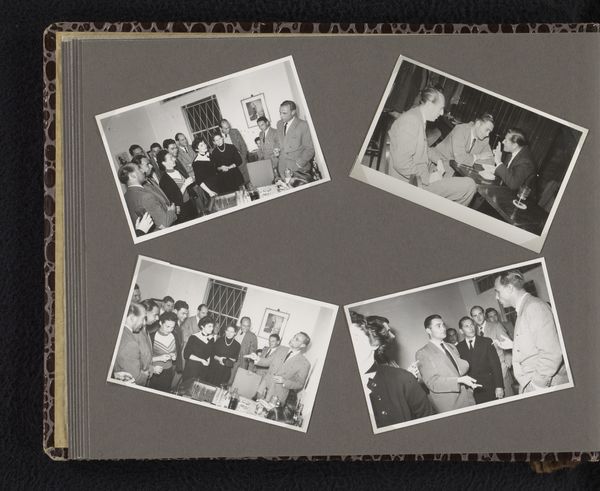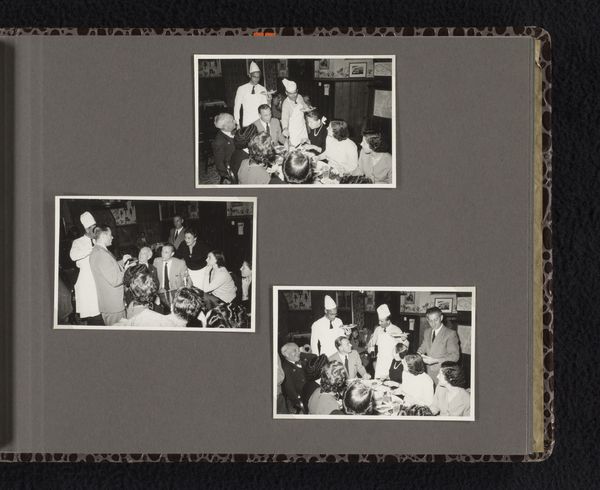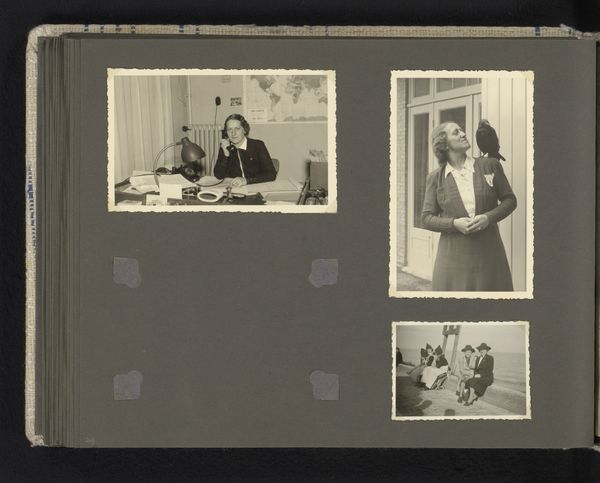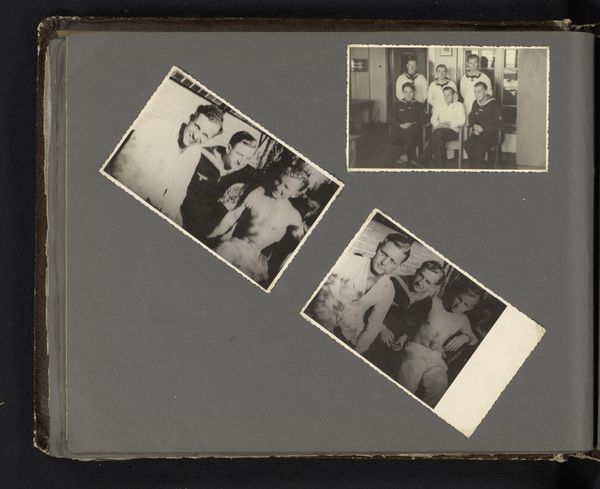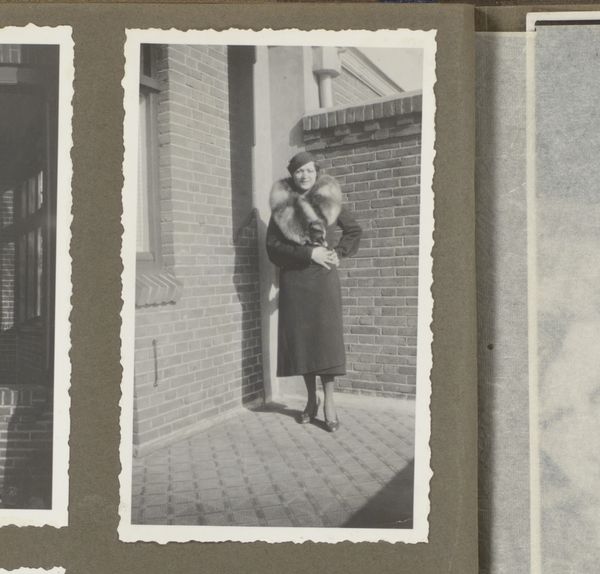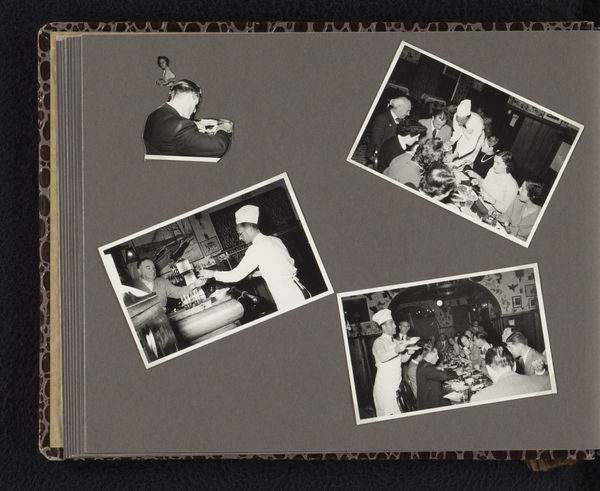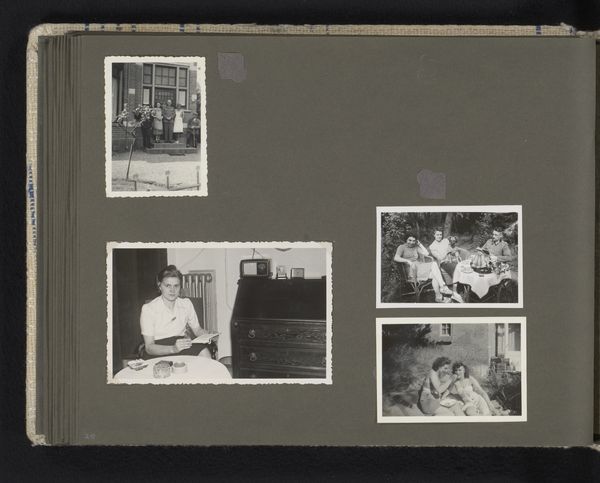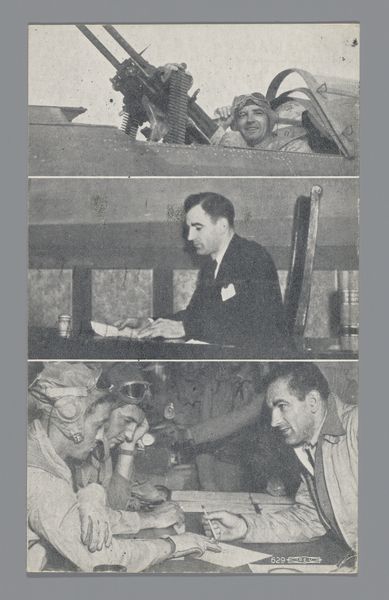
Dimensions: height 85 mm, width 120 mm, height 190 mm, width 250 mm
Copyright: Rijks Museum: Open Domain
Curator: Looking at this curious artifact, we find ourselves peering into an album page presenting two distinct photographs, both believed to have been taken sometime between 1947 and 1955 in Israel. The title suggests we're seeing "Isabel Wachenheimer and an unknown colleague from the KLM." Editor: Right away, I'm drawn to the contrast. There's Isabel, delicately smelling a flower—posed, almost dreamlike—then this dapper gentleman, whisky in hand, seemingly caught in a moment of reflection. The materials, simple black and white photographs glued into an album, speak to a very hands-on method of archiving memory, don't you think? Curator: Precisely! And think of the hidden story within that unknown colleague, the anonymity adding a certain weight to his presence, suggesting something about labor and perhaps fleeting moments of luxury, especially if his job entailed the privilege of travel, the whisky acting as a small indulgence to counteract fatigue. Editor: Absolutely. It also speaks volumes about class and gender dynamics of the era. We see the careful arrangement of both sitters within institutional spaces as they interact with ephemeral pleasures: Isabel and the flower or her KLM counterpart who seeks out momentary delight at the bottom of the bottle! Curator: There’s a distinct candidness that blurs lines between photojournalism and portraiture, like an unfolding tale pieced together by fragmented images, but I find myself wishing to know what existed before and after in this album. Editor: For sure. It's those mundane and seemingly simple photographic materials, when recontextualized within archives or family histories, that we gain critical understanding to the systems propping up labor or capital expansion. The surface can belie their true purpose. Curator: Perhaps the heart wants what it wants, especially if it means tracing the faint pulse of someone who existed just briefly, their image hinting at the possibility that every fleeting photograph is itself, in effect, a quiet ghost story. Editor: Right. By deconstructing the material reality of something—its means of production or where it circulates as image—can help make more of a meaningful encounter, hopefully moving us all past seeing these works merely for their sentimental value.
Comments
No comments
Be the first to comment and join the conversation on the ultimate creative platform.
